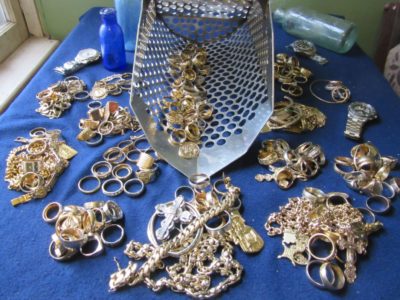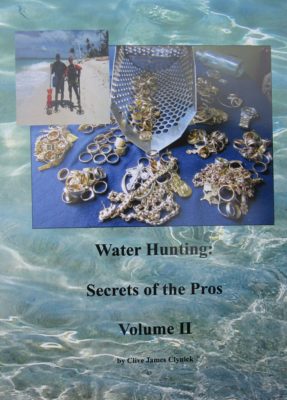
Exchange
Exchange is something that happens on shorelines that have some level of wave action. Where you have a faster wave interval, more material is pushed in than is drawn out. When the waves subside, this same material falls back out into deeper water. Sometimes objects are carried in with this sand and deposited either permanently or until they are dragged back out. Understanding this process can explain how some sites seem to replenish themselves, or conversely, be full of signals one day and empty the next.
Classification
Classification is the process whereby objects are grouped according to weight and density. It is the result—the dependant variable of all the other shoreline features. This is something that shoreline surface hunting (by eye) can teach you a lot about. One place I search for artifacts had been an old incinerate dump from about 1900 to the 40’s. It contains a wide variety to materials—from stone and brick to Bakelite pieces and metals—brass, copper, lead, iron and steel. It’s a fascinating study because every one of these material will be placed separately along the shore by the current. To find gold (lost in garbage) and silver coins, one needs only look for other dense, heavy similarly sized objects and begin sifting.
There’s also such a thing as “levels” of classification. By this I mean the degree to which objects will be classified within the strata. At some locations, there will be heavy targets available relatively close to the surface. At other locations (or times), wave action will combine with soft sand textures to drive any gold (or even coins) deep. This also relates to seasonality. During “on-season” there will be more recently lost items that remain near the surface whereas in winter or during the off season there has been more time for the waves to classify targets.
Classification is the most important thing to understand of all and learning to look for the clues and indicators of how classified / stratified a site or section is a critical skill. It’s kind of a paradox–if you want to find big, heavy gold–learn about sand–sand levels, sand textures, sand contours and sand grades. (I will to go into greater detail about how these factors affect shoreline treasure hunting success later on in the book).
From: “Water Hunting: Secrets of the Pros, Volume II”
101 pgs, Softbound $16.95 (2017)
